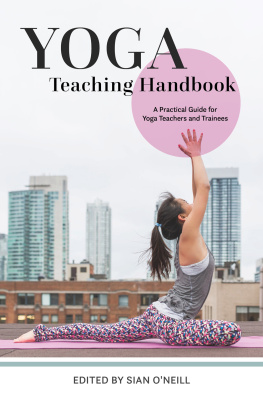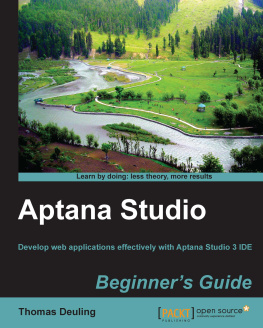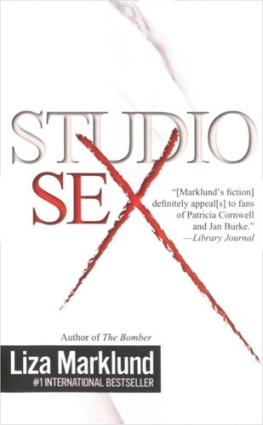9781476834146
Cover image by Susan Osborne
Copyright 2009 by HAL LEONARD CORPORATION International Copyright Secured All Rights Reserved
No part of this publication may be reproduced in any form or by any means without the prior written permission of the Publisher.
Published by:
Hal Leonard Corporation
7777 W. Bluemound Road
P.O. Box 13819
Milwaukee, Wl 53213
In Australia Contact:
Hal Leonard Australia Pty. Ltd.
4 Lentara Court
Cheltenham, Victoria, 3192 Australia
Email: ausadmin@halleonard.com.au
Printed in the U.S.A.
First Edition
Visit Hal Leonard Online at
www.halleonard.com
PREFACE
M y aim in writing The Independent Piano Teachers Studio Handbook is to offer a holistic approach to piano teaching, one that addresses the needs of the teacher as well as the student. My hope is that this book will guide those in pedagogy courses who have yet to teach, give encouragement and insight to those who are just starting their careers as piano teachers, and present experienced teachers with new options and approaches to teaching. After 40 years of teaching, I feel I have much to share as well as much to learn. It is this spirit of lifelong learning that inspired me most to write this book.
There are four main themes that run throughout the text:
Acknowledging the business and professional issues that affect the independent music teacher
Focusing on the important skills students need in order to play musically and with proficiency
Developing a comprehensive curriculum in the independent studio
Committing oneself to professional development and arts advocacy
One important decision I made in this book was to include resources on the various topics presented within. The decision to include resources was not made lightly as books go out of print, websites change addresses and format, and new material comes on the market every month. Nonetheless, I feel that the addition of the resources will provide a huge service to pedagogy students and piano teachers alike. When reading about chamber music, world music, pedaling, theory, music history, or any other topic in the book, these resources will provide the foundation for continued learning and a model for future research. No list could be complete, but I have taken great pleasure in researching the products and professional organizations available to piano teachers and including a sampling in this book. I owe Hal Leonard Corporation a special thanks for their willingness to list the products of other publishers in this book, a decision that truly demonstrates their commitment to education.
Another significant contributing factor to this book is a series of articles I wrote for American Music Teacher, many for the Its All of Your Business column. My gratitude goes to American Music Teacher and its publisher, Dr. Gary Ingle, for allowing me to use those articles as the basis for the opening chapters of this book.
Because of my strong commitment to professional development and my longtime membership in Music Teachers National Association, a number of references are made to items that appear on the MTNA website. MTNA has been kind enough to dedicate a link for this publication, with easy access to each area mentioned within the text. References made to various areas of the MTNA website will appear at www.mtna.org/HLtext and will be listed by the chapter in which they appear.
Readers will notice that I refer to teachers as she. Although there are numerous male piano teachers, in order to be concise and avoid clumsy wording, this book always refers to the piano teacher as female. Throughout the book, such statements are meant to imply both male and female.
It is my hope that this book will provide new and experienced teachers alike with practical and inspiring guidelines for a unique, professional, and rewarding career as an independent piano teacher.
ACKNOWLEDGMENTS
N umerous people reviewed portions of The Independent Piano Teachers Studio Handbook and offered their professional insights. I would like to offer my thanks to the following people in particular: Dr. Sarah Kahl, Dr. Diana Skroch, Dr. Sara Hagen, Dr. Jay Hershberger, Marienne Uszler, Mavis Green, Dr. Joanne Haroutounian, Dr. Dianna Anderson, Beth Leinen, and Julie Gigante.
The description of every organization and resource was checked with a publisher, editor, author, or organization. Many of these groups sent their preferred descriptions, some taken from the Internet, some modified from the Internet, and some modified from my original descriptions. I would like to thank all those who helped with product descriptions. In particular, I offer my thanks to the major editors who assisted with product descriptions: Teresa Ledford and Dr. Peggy Otwell from Hal Leonard Corporation; E.L. Lancaster from Alfred Publishing Co., Inc.; Alison Sloan from the Frederick Harris Music Co., Ltd., Peggy Gallagher from FJH Music Company Inc; and Jennifer Opdahl from Neil A. Kjos Music Company.
I would like to thank the many talented individuals at Hal Leonard Corporation for the time and effort that went into editing this book. Thank you to Dr. Peggy Otwell for inviting me to write the book and for her work with the initial edits. Thank you to Carol Klose, Dan Maske, and J. Mark Baker for their excellent editing. Their expertise has made this a far more readable and enjoyable book.
Thank you to American Music Teacher and its publisher, Dr. Gary Ingle, for allowing the use of my past American Music Teacher articles in this book, and to Julianne Miranda and Mendy McKinnis for their help in creating a link on the MTNA website dedicated to this publication.
And finally, I would like to thank my husband, Kal, and our children, Max and Emma, for their support during the writing of this book. I am blessed to have such a loving and supportive family.
Part I
DEVELOPING AND MAINTAINING PROFESSIONALISM IN THE INDEPENDENT PIANO STUDIO
Whether we are establishing our first studio or are seeking to enhance an existing one, a high standard of professionalism is an important and necessary goal for success.
The chapters in Part I focus on embracing standards of professionalism, creating and using professional studio documents, devising a long-range plan for studio space, acquiring the necessary equipment, and developing the basic office skills needed to operate a successful business.
Chapter 1
EMBRACING PROFESSIONALISM
M any of us have been confronted with that old stereotype of the neighborhood piano teacher who has minimal training and teaches a few lessons for egg money.
Old stereotypes die hard, and, unfortunately, the reality of our training and expertise is often far greater than the expectations of many parents.
A great deal will be said in this book about the view others have of our profession as well as our own perceptions of the work we do. Running an independent studio in todays world is far different than it was 30 years ago. We are generally more educated, have far more resources available to us, and view our teaching in a more professional light. As independent piano teachers of today, we have many choices to make, and the consequences of those choices can lead us either down the path to mediocrity, or along the road to success.







![J. F. DiMarzio [J. F. DiMarzio] - Android Studio Game Development: Concepts and Design](/uploads/posts/book/119418/thumbs/j-f-dimarzio-j-f-dimarzio-android-studio.jpg)



